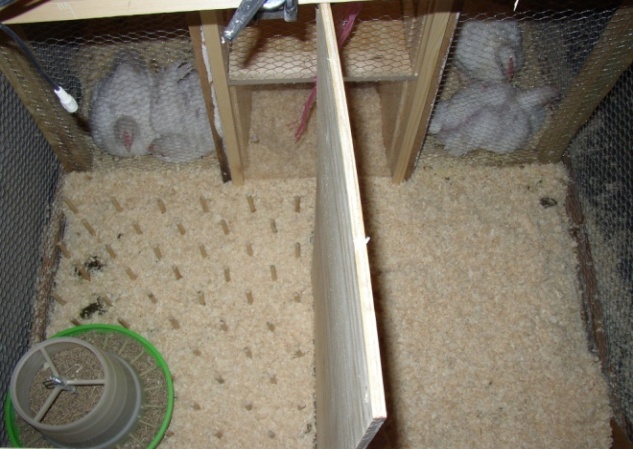Evidence of pain in broiler chickens
Published on 30 August 2012 in Food, health and wellbeing
 crop.jpg)
Introduction
The gait or walking style of meat (broiler) chickens differs from that of laying hens. On a scale of 0-5, where a laying hen would typically have a ‘normal’ gait of 0, about 25% or more chickens at slaughter age would have a gait of 3, indicating that they have some type of gait defect.
The aim of this study was to determine the extent to which pain, as opposed to say conformation, was associated with or influenced walking style in broilers of gait score 3 (i.e. moderate walking difficulty).
To do this we used an analgesic to evaluate the subjective experience of pain in broiler chickens, determining this through a combination of techniques that included behavioural assessment, gait score measurements, and using a force plate (which measures forces applied to a walking platform during each foot step) to objectively measure walking style.
Key Points
Our work did not suggest that GS 3 broilers will alter their walking style or behaviour when administered with 2 or 5 mg/kg of the analgesic meloxicam.
Research Undertaken
Initially we used a pain model to ensure that the analgesic selected was effective at improving walking ability where chickens were known to be in moderate leg discomfort. The final analgesic chosen was meloxicam, a non-steroidal anti-inflammatory (NSAID).
Then, 384 naturally-occurring gait score 1 and gait score 3 male broilers of two different strains (A and B) were assessed for their response before and after being given a medium (2 mg/kg) or high (5 mg/kg) dose of meloxicam or saline control, using a force plate, gait scoring, and a variety of behavioural tests (see Figure below).

Figure: Trade-off test to assess broiler motivation. On the left, birds could feed but could not sit (due to small protruding dowels), and on the right they could sit but could not eat. Birds entered a start box (seen at the back, middle) and could walk back and forth to either the left or right sides. The assumption was that broilers with painful leg conditions were more likely to choose the right side, whereas broilers that had no pain were more likely to choose the left side.
All birds were also assessed post-mortem. Strain A broilers had more leg health problems (72.0%), and more problems likely to be painful (34.4%), than strain B (50.3% and 11.5% respectively); gait score 3 broilers had more leg health problems than gait score 1; and post-mortem problems often affected how well birds performed in behavioural tests (for example, by being associated with less activity). Force plate results showed that walking style differed with bird weight), strain and gait score, and some force plate measures were influenced by post mortem problems, suggesting that particular post-mortem problems affect walking style (making it poorer). However, there were no consistent effects of either dose of analgesic on any of the measures taken.
The consistent lack of an analgesic effect from the range of data-types collected indicate that for gait score 3 broilers tested here the cause of moderate walking difficulty could not be improved by an NSAID pain-relieving drug. If painful conditions are associated with gait score 3 then, within this group of broilers, they are likely to represent a relative small sub-set of the gait score 3 population.
Policy Implications
This work aims to inform Government and producers, as well as other scientists interested in broiler welfare, about the welfare state of gait score 3 broilers. Current evidence suggests that slaughter weight broilers (often gait score 3) are not necessarily experiencing leg-associated pain or that pain is masked by something else such as conformation. However, further validation of the analgesic model and further work to differentiate between conformation and possible pain would be beneficial to confirm this. The strain differences in post-mortem problems were indicative that broiler chickens can be successfully selected for better leg health.
Author
Dr Victoria Sandilands Vicky.Sandilands@sruc.ac.uk







